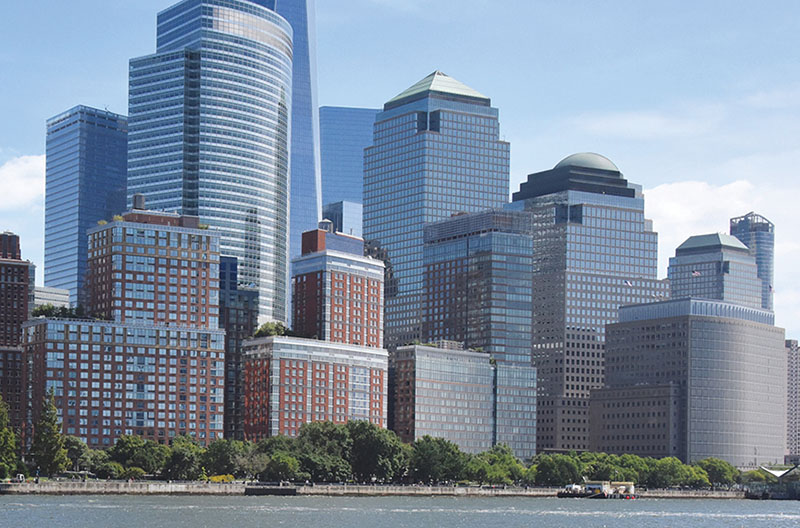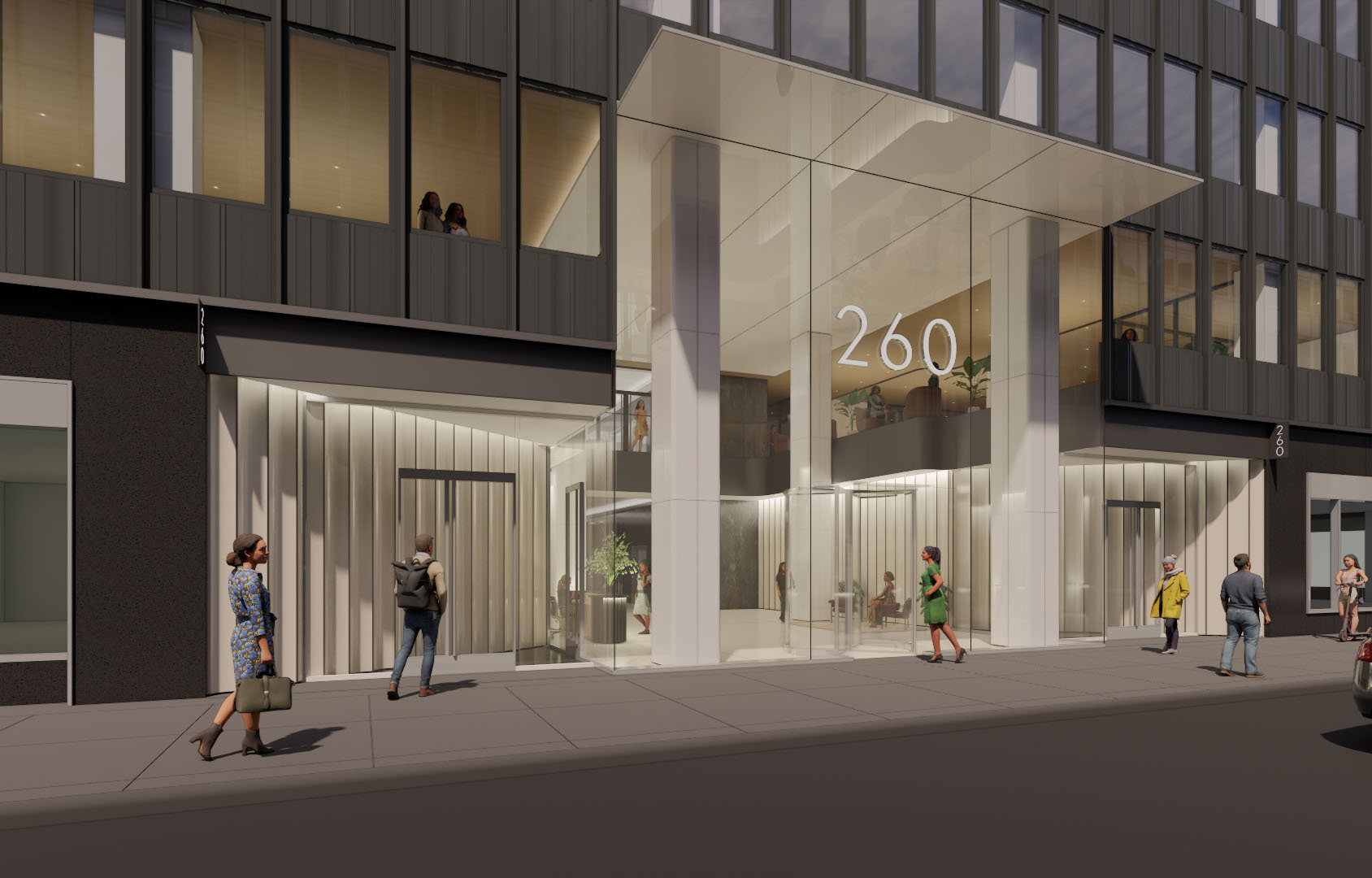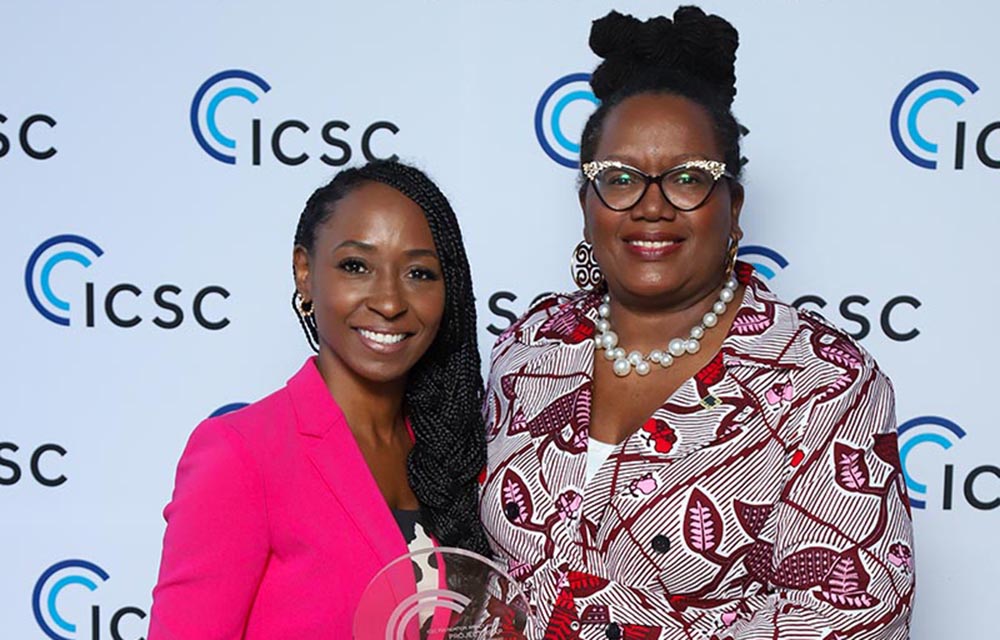Battery Park City Authority launches ten-year sustainability plan

New York, NY The Battery Park City Authority launched the Battery Park City Sustainability Plan, a comprehensive pathway of strategies, goals, and specific actions to achieve progressive sustainability targets over the next decade, and laying the groundwork for continued sustainability action after 2030. Among the largest neighborhood-scale sustainability plans in the U.S., the BPC Sustainability Plan was developed in partnership with international sustainability consultancy Buro Happold, and responds to governor Andrew Cuomo’s charge to make the state carbon neutral by 2050.
“We can’t take Battery Park City’s green legacy for granted. Even in the midst of present challenges, it’s imperative that we strengthen our commitment to greater environmental responsibility – the future depends on it,” said BPCA president and CEO B.J. Jones. “To that end, we’ve developed this neighborhood plan with energy, waste, water, and site management strategies to help advance our efforts and illustrate to others how governor Cuomo’s ambitious vision for carbon neutrality can be achieved. This was a true team effort and my thanks goes to the Buro Happold team, our board members, my colleagues, agency partners, and the Battery Park City community.”
The BPC Sustainability Plan is intended as a guiding document for both BPCA and the greater Battery Park City community, and follows a comprehensive stakeholder outreach and engagement initiative, which gave shape to a collective Sustainability Vision for Battery Park City: “We envision a Battery Park City that will serve as an innovative model for urban climate action, where all of us who live, work, and spend time here, mobilize to create a sustainable future.”
Nearly 500 people participated in the development of this Sustainability Plan, with public roundtables, pop-ups at public events and in BPCA’s offices, and an online survey. This approach solicited ideas from the public and from BPCA staff for inclusion in this plan–more than one-third of the plan sub-actions came directly from these engagements–as well as helped BPCA identify where there is opportunity to increase awareness, seek collaborations, and facilitate programs to promote sustainability.
The BPC Sustainability Plan is also informed by robust interagency coordination. The Battery Park City Carbon Neutral Working Group, comprised of content experts in the sustainable energy field, includes representatives from the New York Power Authority, New York State Energy Research & Development Authority, Con Ed, Department of Environmental Conservation, and New York City Mayor’s Office of Sustainability.
“Battery Park City is one of New York City’s newest and most future-forward communities, so it makes total sense that the Battery Park City Authority is out in front when it comes to sustainability,” said Gil Quiniones, New York Power Authority president and CEO. “Governor Cuomo has a bold plan for greenhouse gas emission reduction, carbon-free electricity, and use of renewable energy for the next decades. In order for us to meet these nation-leading climate targets, we must start at home, here in New York City in one of the most vibrant, dynamic neighborhoods along our coastline. NYPA is advising BPCA on energy efficiency, building electrification, low-carbon energy systems, renewable energy supply and storage options, and greenhouse gas emissions monitoring and reporting. We look forward to working with BPCA on its sustainability efforts that are sure to set the bar for other communities to follow.”
“As New York continues to lead national conversations on our changing climate, and forward thinking models to ensure our most vulnerable populations are included in solutions to address the need for resiliency, preserving natural resources, and delivering clean, renewable energy to all, NYSERDA has proudly partnered with Battery Park City as they embark on this sustainability plan,” said Doreen Harris, acting president and CEO, New York State Energy Research and Development Authority. “They are leading by example in their support of governor Cuomo’s plan for economy wide carbon neutrality, helping us reduce our carbon footprint, and joining in our efforts to deliver meaningful and innovative clean energy and cost saving programs that result in healthier, greener communities and we congratulate them on this milestone.”
“Confronting the climate challenge before us requires everyone to identify, advocate for, and implement the best solutions for each of our neighborhoods and communities,” said Mark Chambers, director of the mayor’s office of sustainability for the City of New York. “We thank BPCA for their continued leadership and collaboration in advancing this urgent work.”
As a result of these engagements, the BPC Sustainability Plan puts forth a holistic vision of environmental sustainability, including health and wellness, environmental quality, and education, achievable through pursuit of three primary goals:
Resource Management & Reduction – Reduce the demand for energy and water, promote the creative reuse of resources, strengthen Battery Park City’s resilience, enhance its ecosystems, and minimize waste to reduce its environmental footprint.
Innovation & Inspiration – Leverage Battery Park City initiatives as scalable models for sustainability to reduce the neighborhood’s carbon footprint and inspire urban developments across the world to accelerate environmental action.
Education & Collaboration – Bolster engagement and education throughout Battery Park City on sustainability-related issues and actions while ensuring the benefits of those actions are shared, including improved environmental quality, reduced utility and operational costs, and higher quality of life.
The BPC Sustainability Plan is one of three documents produced by BPCA as part of its sustainability platform. It is centered around four “Topic Areas” (Energy, Water, Materials & Waste, and Site), which are further broken down into broad aspirations and discrete methods for achievement – strategies, targets, milestones, actions, and sub-actions – that chart a course toward making Battery Park City a sustainability model.
18 Strategies – are the primary methods for achieving Battery Park City’s sustainability vision and goals, and include:
in Energy—
- Deep energy retrofits
- Building electrification
- Low-carbon district energy systems
- Renewable energy supply and storage
- Greenhouse gas emissions monitoring and reporting
in Water—
- Water conservation
- Water recycling systems
- Resiliency and stormwater management
in Materials & Waste—
- Sustainable consumption
- Sustainable building materials
- Waste diversion
- Organics collection and composting
- Construction and demolition activities
in Site—
- Biodiversity and habitats
- Quality of life
- Environmental monitoring and data sharing
- Active transportation
- Electric vehicle infrastructure
25 Targets – are the objectives set to achieve each strategy by 2030. These targets are either Battery Park City Targets (those that will be achieved neighborhood-wide), or BPCA-specific Targets (those that will be achieved in BPCA-owned and leased spaces – both indoor and outdoor);
64 Supporting Milestones – are placed along a timeline over the next ten years, which BPCA will track to illustrate progress toward meeting the 2030 targets;
46 Actions – provide more detailed initiatives that will be implemented underneath each strategy for the purposes of achieving the targets. Actions will be either BPCA-led Actions (those to be primarily implemented and managed by BPCA) or BPC-wide Actions (those that will be implemented across Battery Park City and require collaboration with all buildings and major stakeholders); and
142 Sub-Actions – are the implementation steps to support each action. These sub-actions will be elaborated on in the Sustainability Implementation Plan.
Accompanying the BPC Sustainability Plan is a set of two enabling documents:
- The Sustainability Implementation Plan outlines the policies, programs, partnerships, tools, and funding mechanisms that are available, or can be created, to assist in transforming the BPC Sustainability Plan into a reality
- The new BPC Green Guidelines provides detailed technical guidance to BPCA and to Battery Park City building owners, managers, and tenants, including the steps necessary to achieve a more sustainable Battery Park City
New York State has set ambitious targets to reduce its greenhouse gas (GHG) emissions by 40% by 2030, and 80% by 2050, from 1990 levels. The State’s latest sustainability effort, the Green New Deal, accelerates the state’s action by aiming to achieve 70% renewable energy by 2030 and 100% carbon-free electricity by 2040. By aiming for net zero carbon by 2050, Battery Park City is aligning itself with global leaders and committing to prioritize climate action. Now, informed by this Sustainability Plan, BPCA will act to reduce GHG emissions and tackle sustainability issues while collaborating and sharing lessons learned with the wider New York City community and other communities around the world.
“The announcement of this ambitious green initiative for Battery Park City reflects the importance of addressing sustainability at a district-wide scale,” said Buro Happold principal Robert Okpala. “We’re excited to work with the Battery Park City Authority to deliver this far-reaching and influential plan to deliver integrated sustainable solutions to the residents and a wide range of stakeholders in Battery Park City. We believe it will inspire other neighborhoods across the U.S. and the world to accelerate their action against climate change.”
“World leaders will soon meet to set new global targets to protect nature under the United Nations Convention on Biological Diversity,” said Angie Fyfe, executive director ICLEI Local Governments for Sustainability USA.“Congratulations to Battery Park City, a near neighbor to the UN headquarters, for awakening us to the richness of the area’s biodiversity and its contribution to our wellbeing. The Battery Park City Sustainability Plans and Green Guidelines remind us that if we care for nature, it will care for us.”
Said Dr. Vatsal Bhatt, U.S. Green Building Council, Vice President for Communities, “I am very excited to see that Buro Happold has tackled energy issues comprehensively for moving Battery Park City closer to energy resilience and net zero emissions by 2050; with energy modeling, deep energy retrofits for buildings, transitioning buildings to all-electric systems, expanding the district energy system supporting higher efficiency and better economy of scale, transitioning to an electricity supply to all renewable sources, tackling embodied carbon and continuous monitoring and reporting.”
Battery Park City has a long history of environmental leadership. Since its inception, the parks and open spaces in Battery Park City were designed with environmental quality as a priority. Starting in 2000, BPCA released environmental guidelines for residential buildings, leading to the development of buildings that were well ahead of city, and even global, standards at the time. Two years later, similar guidance was provided for commercial buildings, with the original residential guidelines updated thereafter. Decades of proactive leadership have resulted in Battery Park City being one of the most sustainable communities in New York City.
Building upon its environmental legacy, the Authority has made the following recent strides in green governance:
In July 2019, BPCA issued $76.3 million in Sustainability Bonds Phase 1 of its Capital Plan, which includes development of a comprehensive resiliency infrastructure – entailing perimeter storm barriers, flood protection systems, waterproofing, and landscaping to protect its residents and assets from climate change. The Authority’s Sustainability Bond Framework aligns with the Green Bond Principles, Social Bond Principles, and Sustainability Bond Guidelines (promulgated by the International Capital Markets Association), as well as United Nations Sustainable Development Goals 11 (Sustainable Cities and Communities) and 13 (Climate Action). BPCA was selected as the Northeast Deal of the Year by Bond Buyer for its total $673 million offering, of which these Sustainability Bonds were a part.
On Earth Day 2019, BPCA launched its Zero Waste Initiative, a waste-reduction program that includes education, regular reporting and review of vendor practices, and pledges from more than 100 Authority staff members to reduce, reuse, and recycle. Focusing initially on BPCA’s practices at its 75 Battery Place facility, the Authority has now attained Gold-level TRUE certification (an assessor-based program that rates how well facilities minimize waste), by decreasing office waste going to landfill by 90% over the past 12 months, and will expand Zero Waste to BPCA’s other facilities – and eventually to Battery Park City’s open spaces and the greater community. To that end several Authority staff have earned certification as TRUE Zero Waste advisors, lending BPCA on-site expertise to implement the neighborhood’s Zero Waste program.
Also on Earth Day 2019, in partnership with Gateway Plaza – Battery Park City’s largest residential complex – BPCA launched the neighborhood’s first building-specific composting program, diverting nearly 20,000 lbs. of food waste to date.
BPCA’s Investment Guidelines emphasize the consideration ofenvironmental, social, and governance (ESG) factors in the Authority’s investment strategy. BPCA encourages its investment managers to include ESG factors in their analytical processes and prohibits investment in companies that are heavily-reliant on fossil fuels.
AmTrustRE completes $211m acquisition of 260 Madison Ave.


Behind the post: Why reels, stories, and shorts work for CRE (and how to use them) - by Kimberly Zar Bloorian

Strategic pause - by Shallini Mehra and Chirag Doshi

AI comes to public relations, but be cautious, experts say - by Harry Zlokower









.jpg)
.gif)
.gif)